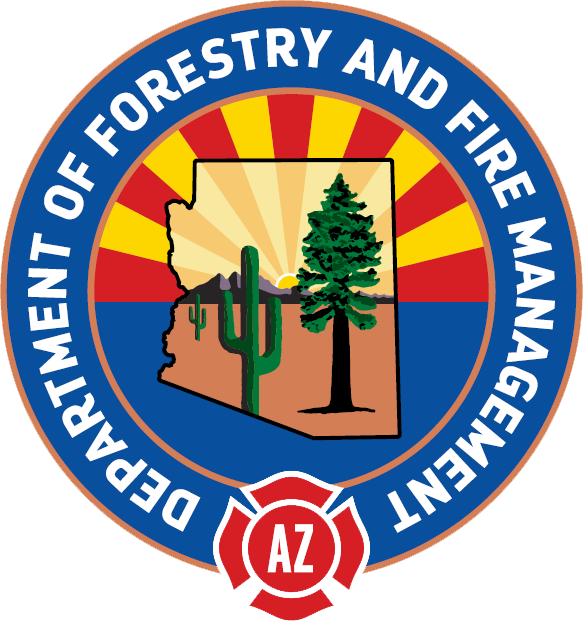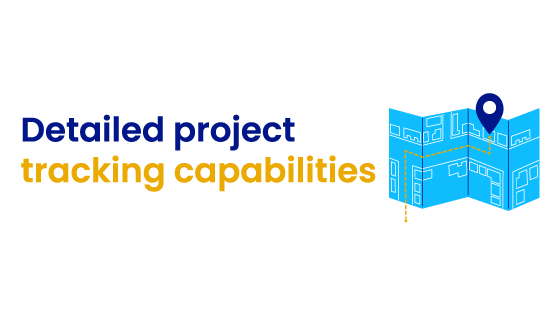Main Menu
Client Impact Story
Arizona Department of Fire and Forestry
Transitioning from Days of Manual Work to a Click of a Button with Salesforce
BACKGROUND
The Arizona Department of Forestry and Fire Management (DFFM) protects 22 million acres of state and private lands. They offer fire defense and collaboration on fire control initiatives with partner organizations across the state.
Beyond wildfire response, DFFM’s responsibilities include fuel management, community aid, urban forestry oversight, technical assistance, forest health monitoring, invasive species management, and fuel risk reduction. Moreover, the agency is pivotal in upholding building safety and adhering to established codes and standards.

CHALLENGE

Historically, DFFM has been reliant on a proprietary Geographic Information System (GIS) to manage forestry projects across their jurisdiction. However, because this platform was designed to visualize geographic data, it could no longer support the agency’s rapidly growing needs in project management. Significant bottlenecks hindered productivity, accomplishment tracking, and data management that negatively affected prospective grant allocations.
In particular, employees were utilizing a mix of Excel, Google spreadsheets, and paper-based processes to track Key Performance Indicators (KPI). Project managers each employed different methods to capture information which led to disjointed records, data silos, and a patchwork approach to supporting active projects and wildfire mitigation initiatives. Exacerbated by the software’s inability to capture granular time periods like weeks, months, or fiscal years–everyday procedures demanded intensive manual work, wasted thousands of hours, led to duplicate information, and created redundant administrative tasks.
Furthermore, this tool was unable to auto-generate reports, forcing staff to create them by hand with references from GIS spatial analysis and Excel pivot tables. This wasted hundreds of hours for even basic financial inquiries. In particular, Snapshot Reports would take one to four days and collaboration between two staff, oftentimes District Forester and GIS Specialist–the exact opposite of a ‘snapshot’.
“Our GIS setup was not suitable. It was very good for a lot of things, but it was a big pain to create a user interface that was intuitive so the process owner could easily report their accomplishments,” said Wolfgang Grunberg, the GIS and Data Supervisor for the forestry department.
DFFM needed a scalable solution that was low maintenance, easy to deploy, ready to use out-of-the-box, and configurable to their specific needs. Inspired by the successful Salesforce implementation at their sister agency, the Arizona State Land Department, Grunberg pitched a transition to a Salesforce, a cloud-based CRM.

Laying the Groundwork for a Future-Ready System

While FITS is still in the early stages of adoption across the agency, there are already a host of exciting new features that are yet to be utilized or are currently under development.
Mastek has recently introduced a dedicated mobile app with the goal of allowing foresters to log accomplishments and updates directly from the field. This not only reduces the lag between data collection and entry but also ensures timely updates without having to access a computer.
At present, the new system serves primarily as an accomplishment tracking and reporting tool. Mastek is already working on incorporating more functionalities related to Grant and Forestry Project management. The agency expects FITS to encompass both in-office tasks and field operations, thereby optimizing workflows and enhancing collaboration.
“With Salesforce, we successfully synced up different lanes that couldn’t talk to each other to find common ground. It conferred on us this ability to think through how we collaborate, allowing us to work together and find the gaps in our business,” said Grunberg.
After the completion of the FITS project, the agency progressed to the next phase of its collaboration with Mastek, which hones budget management processes and provides an in-depth view of grant allocations, expenditures, and remaining balances.
“Since we had our Salesforce implementation running in March, staff have been able to report accomplishments by more specific time periods. We can finally summarize how many acres were treated and see at a glance what funds were allocated.”
Wolfgang Grunberg
GIS and Data Supervisor
Technology Used

- Salesforce-backed CRM
- Integration of AGOL (ArcGIS Online)
- Integration of Nintex DocGen for Project Snapshot feature
- Integration of Salesforce Chatter
- Dedicated mobile app for direct fieldwork data logging
Results
The proposal to adopt a CRM like Salesforce for project management was greenlit in 2021. This transition aimed to boost the efficiency of operations, establish a strategy that could support diverse departmental needs for current and future use, and improve user experience.
Boasting a stellar track record of implementing Salesforce platforms for natural resources management teams in Arizona, Mastek proved to be the ideal partner to help transform the agency’s project management processes. They understood that this transition to a CRM could be a lengthy and resource-intensive procedure. So instead of jumping right into development, Mastek chose to unify stakeholders to ensure greater efficiency.
“From the start, Mastek communicated closely with our executive leadership to make it very clear from the top down that everybody’s priority was to support this effort. Because of this, we were able to establish a strong spirit of collaboration that made everything work out so well,” said Grunberg.
After a thorough discovery process, Mastek engineered a cloud-based Forestry Information Tracking System (FITS) designed with scalability in mind. Built on Salesforce, FITS integrated various platforms vital for operations. ArcGIS Online (AGOL) would facilitate bidirectional transfer of information between systems while Nintex DocGen would set the foundation for a new “Project Snapshot” feature that could instantly provide users with a consistent and comprehensive overview.
“They asked all the right questions and understood the nuances of our business. Mastek’s discovery was extremely important because it forced us to write down how our process works,” said Grunberg.

To read the full case study click here!
Public Sector
Drastically Reduces Time to Market with New Self-Serve Forms
This state’s Housing and Community Development Department helps to ensure safe, affordable housing for veterans, seniors, young families, farm workers, tribes, people with disabilities, and ...
Read
Healthcare & Life Sciences
Makes Medicare Enrollment Easier with New Portal
Headquartered in Phoenix, Arizona, Banner Health is one of the largest nonprofit health care systems in the United States. Banner operates 30 hospitals, including three ...
Read
Manufacturing
Leveraging Salesforce to Unify Sales and Marketing Ecosystem
This Fortune 500 company is a leading supplier of semiconductor-based solutions. Headquartered in the American Southwest, the company produces a comprehensive range of intelligent power ...
Read





